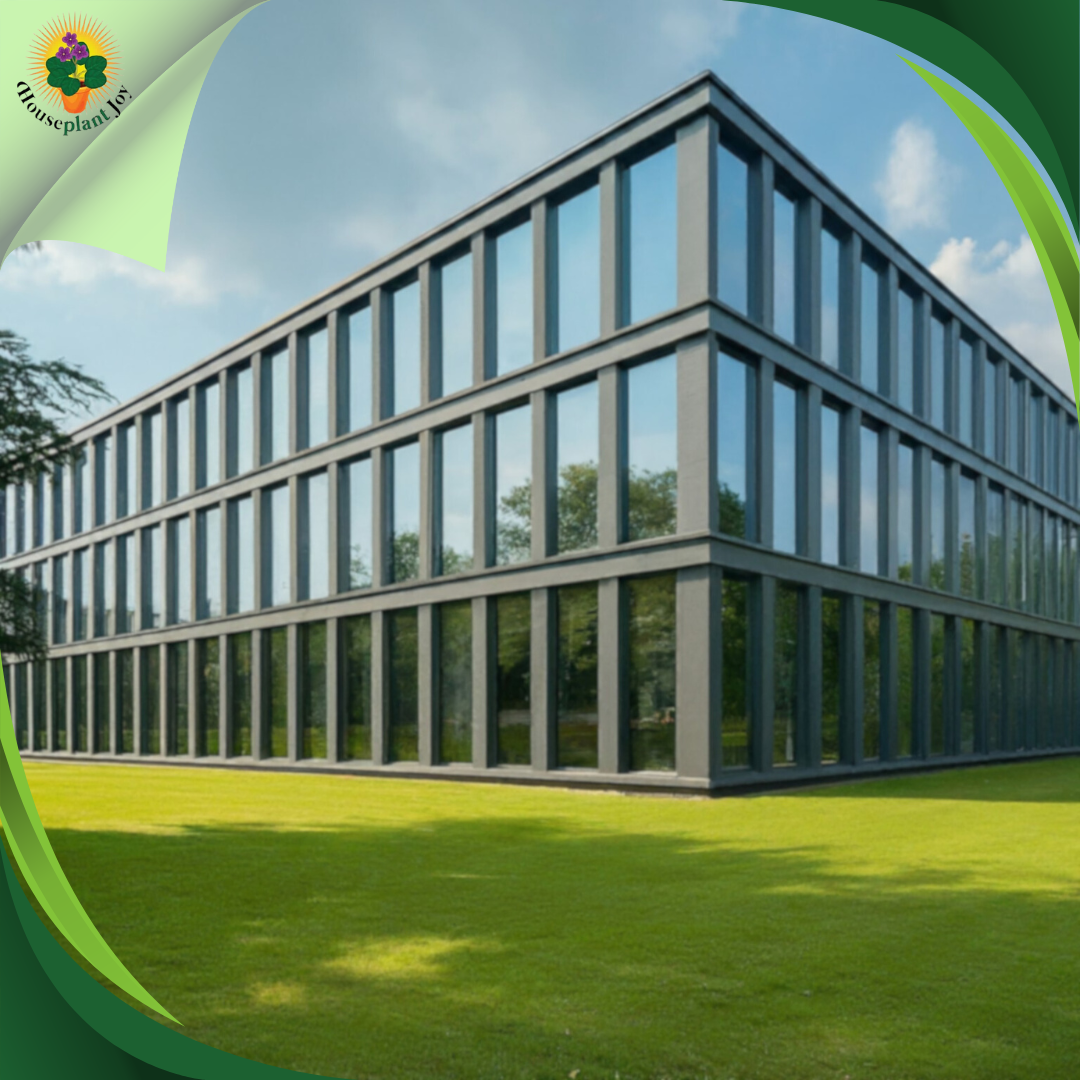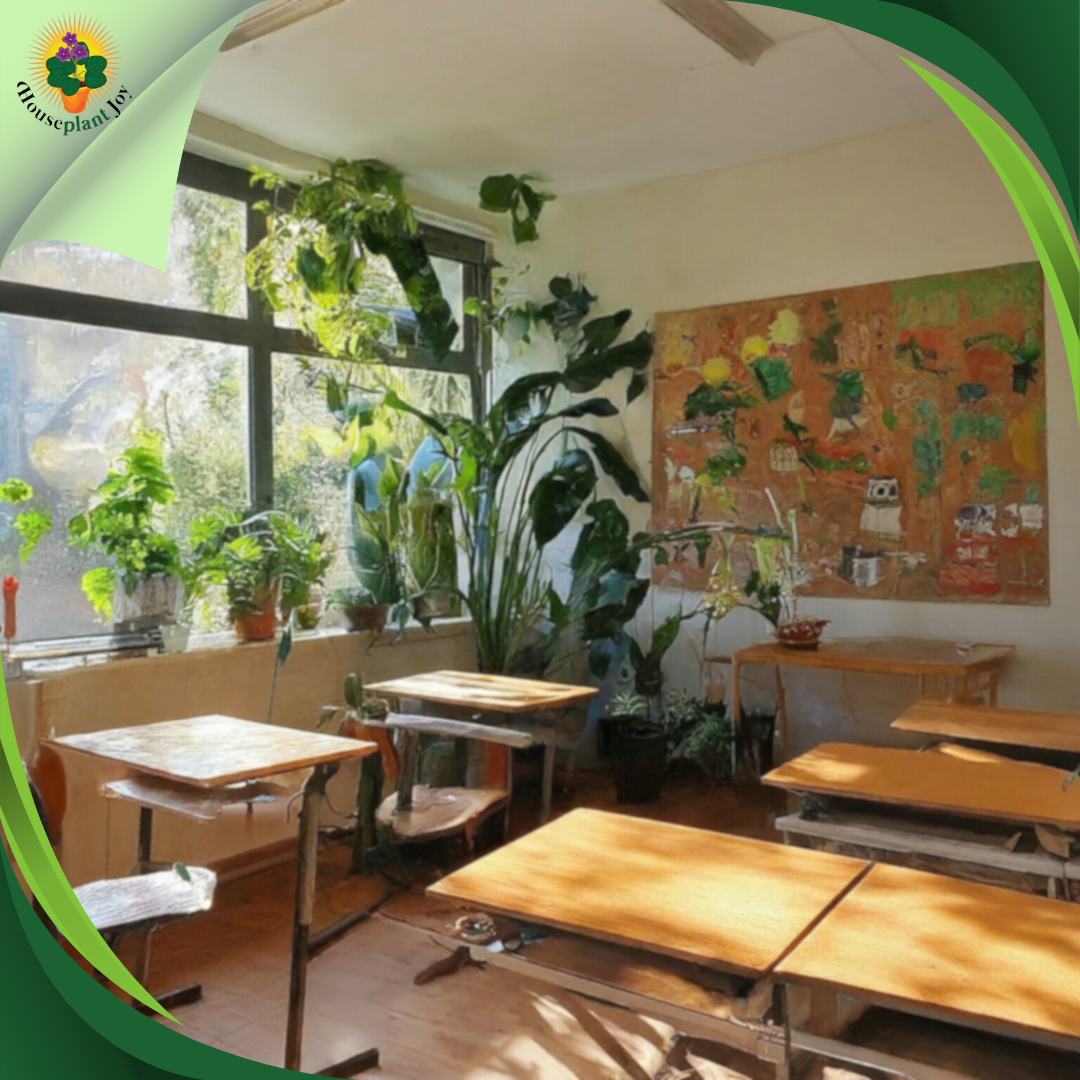HousePlantJoy is supported by our audience. When you purchase through one of our links, we may earn a small affiliate commission. As an Amazon Associate I earn from qualifying purchases. Your cost is not affected.
==================
Ever wonder why being out in nature instantly makes you feel more relaxed and refreshed? That’s where biophilia comes in—our natural, deep-rooted connection to the outdoors. “Biophilia” is the idea that humans are innately drawn to nature and that being around it improves our mental and physical well-being. Whether it’s taking a walk in the park or just having a few plants at home, we all crave that connection with the natural world. In this article, we’ll dive into the science behind biophilia and why it’s so important for our health and happiness. Let’s explore!
Biophilia Explained: Our Innate Connection to Nature – How It Boosts Your Happiness and Health
Have you ever felt a sense of calm wash over you while walking through a forest or sitting by the ocean? This feeling is more than just a random occurrence. It’s part of our deep-rooted connection to nature, known as biophilia.
Biophilia is our innate tendency to seek connections with nature and other forms of life. This concept, first introduced by biologist Edward O. Wilson, suggests that humans have an inherent affinity for the natural world. It’s not just about enjoying pretty scenery – biophilia plays a big role in our health and happiness.
I find it fascinating how our bond with nature can impact our well-being. From reducing stress to improving focus, the benefits of connecting with nature are many. Whether it’s through a walk in the park or adding some plants to our living spaces, embracing our biophilic tendencies can lead to a happier, healthier life.
Key Takeaways
- Our innate connection to nature, called biophilia, influences our health and happiness
- Engaging with nature can reduce stress and improve focus
- We can benefit from biophilia through activities like walks or adding plants to our spaces
Concept Origins and Definitions
The term “biophilia” was first used by psychologist Erich Fromm in the 1960s. He described it as a love for life and living systems. Later, biologist Edward O. Wilson expanded on this idea in his 1984 book “Biophilia.”
Wilson defined biophilia as our innate connection with nature. He believed humans have a natural affinity for other living things. This connection, he argued, is part of our genetic makeup. I find it fascinating how this concept has grown over time. Today, biophilia includes our attraction to natural processes and systems, not just living things.
Evolutionary Perspectives
From an evolutionary standpoint, biophilia makes a lot of sense. Our ancestors relied on nature for survival. They needed to understand their environment to find food, water, and shelter.
Those who had a stronger connection to nature were more likely to survive and pass on their genes. Over time, this preference for nature became hardwired into our brains. I think it’s amazing how this ancient connection still affects us today. Even in our modern world, we often seek out natural settings to relax and recharge.
Components of the Biophilic Response
Our biophilic response involves several key elements:
- Visual attraction to natural forms and patterns
- Emotional responses to nature, like calmness or awe
- Physical reactions, such as lowered heart rate in natural settings
I’ve noticed these responses in myself when I spend time outdoors. Natural light, plants, and water features can all trigger positive reactions. Biophilic design takes advantage of these responses. It brings nature into built environments to improve well-being and productivity.
Understanding these components helps explain why we feel so good in nature. It also shows why adding natural elements to our spaces can be so beneficial.
Psychological and Physiological Effects
Nature has a powerful effect on our minds and bodies. I’ve found that spending time outdoors can boost my mood, sharpen my thinking, and help me relax. Let’s look at some key ways nature impacts us psychologically and physically.
Emotional Well-Being
Being in nature makes me feel good. Studies show that nature exposure improves mood and reduces negative emotions like anger and fear. When I’m surrounded by trees and plants, I feel more peaceful and content.
The sights, sounds, and smells of nature seem to have a calming effect. Watching a sunset or listening to birds sing lifts my spirits. Even looking at photos of nature scenes can boost positive emotions.
Nature also helps me feel more connected to the world around me. This sense of connection enhances my overall well-being and life satisfaction. It’s amazing how a simple walk in the park can brighten my whole day.
Cognitive Function Improvements
Nature sharpens my mind. Research shows that nature exposure boosts creativity and improves cognitive function. After spending time outdoors, I feel more focused and alert.
Natural settings give my brain a break from constant stimulation. This mental rest helps restore my attention and improves my ability to concentrate. I’ve noticed I’m more productive at work after taking a lunchtime nature walk.
Being in nature also sparks my curiosity and imagination. Observing plants and animals inspires creative thinking. Problem-solving becomes easier when I step away from my desk and into green spaces.
Stress Reduction Mechanisms
Nature is a powerful stress-buster. When I’m feeling overwhelmed, spending time outdoors helps me relax. Biophilia research shows that nature exposure reduces stress hormones like cortisol.
The natural world gently engages my senses. This sensory input helps shift my focus away from worries and anxieties. I find that even a few minutes of cloud-watching can ease tension.
Physical activity in nature multiplies the stress-reducing benefits. A hike or bike ride surrounded by greenery leaves me feeling refreshed and recharged. Nature’s calming effect on my nervous system helps me face challenges with renewed energy.
Design Principles
When I design buildings with biophilia in mind, I focus on a few key ideas. I try to use natural light as much as possible. Big windows and skylights let the sunshine flood in. I also like to create views of nature, even in urban settings.
Indoor plants are a must. They clean the air and add life to a space. I often use natural materials like wood and stone. These feel good to touch and remind us of the outdoors. Water features are another great tool. The sound of flowing water can be very soothing. I try to make spaces feel open and airy like you’re outside even when you’re in.
Incorporating Natural Elements
I love finding ways to bring nature indoors. Living walls are a favorite of mine. They’re like vertical gardens inside a building. Green roofs are another cool option. They help insulate the building and provide a space for plants and wildlife.
Natural textures and patterns are key. I might use wood grain patterns or leaf-shaped tiles. Even artwork can help. Paintings or photos of nature scenes can have a calming effect. I also think about the sounds in a space. Maybe I’ll add a small fountain or use materials that dampen noise. Smell is important too. Plants can add nice scents to a room.
Case Studies of Biophilic Design
I’ve seen some amazing examples of biophilic design around the world. The Amazon Spheres in Seattle are a standout. They’re giant glass domes filled with plants. Workers can take breaks surrounded by nature.
Singapore’s Changi Airport has a huge indoor waterfall and forest. It makes waiting for flights much nicer. In New York, the High Line Park turned an old train track into a green space above the city.
I’m also impressed by smaller projects. Some offices now have plant-filled meeting rooms. Schools are adding outdoor classrooms. Even hospitals are using nature to help patients heal faster. It’s exciting to see how biophilic design is changing our built environment.
Urban Planning for Biophilic Environments
I’ve seen amazing examples of biophilic urban planning. Cities are adding green spaces, urban forests, and wildlife corridors. They’re using nature-inspired designs in buildings and public areas.
Some cool features I’ve noticed:
- Green roofs and walls
- Urban farms and community gardens
- Restored wetlands and streams
- Tree-lined streets and mini-parks
These elements help clean the air, reduce noise, and manage stormwater. I love how they make cities more beautiful and livable too.
Community Engagement and Active Living
Biophilic cities get people outside and involved with nature. I’ve seen how this boosts health and happiness. Cities are creating nature trails, bike paths, and outdoor gathering spots.
Fun community activities I’ve observed:
- Nature walks and bird watching groups
- Gardening classes and plant swaps
- Outdoor yoga and fitness programs
- Environmental education for kids
These programs help people connect with nature and each other. They encourage active lifestyles and environmental awareness. I think it’s great how biophilic design brings communities together while protecting local ecosystems.
Benefits for Employees and Employers
When I look at biophilic office designs, I’m always impressed by their positive effects. Employees in these spaces often feel less stressed and more creative. I’ve noticed they tend to be more productive too.
For employers, I see clear advantages. Staff turnover usually drops in nature-inspired offices. People seem to enjoy coming to work more. This can lead to better team collaboration and higher-quality work.
I’ve also observed improved physical health in biophilic workspaces. Employees often report fewer headaches and less eye strain. It’s like the natural elements help counteract the effects of long hours at a computer.
Examples of Biophilic Office Spaces
I love seeing how companies get creative with biophilia. Some offices I’ve visited use living walls – entire sections covered in plants. It’s like working in a vertical garden! Other spaces bring in natural light through large windows or skylights.
I find this really helps people feel connected to the outside world during the workday. I’ve seen offices use water features too. The sound of flowing water can be so calming in a busy workplace.
It’s a simple addition that makes a big impact. Natural materials are another great touch. Wooden desks, stone accents, and even indoor trees can make an office feel more organic and less sterile.
Learning Environments and Nature
Natural elements in schools create calm, inspiring spaces. I love seeing classrooms with big windows and indoor plants. It feels less stuffy and more alive. Some schools even have outdoor learning areas with trees and gardens. These nature-filled spaces help kids focus better.
They’re not as distracted or fidgety. I’ve noticed students seem more relaxed and ready to learn. It’s like the natural setting puts their minds at ease. Teachers can use nature as a learning tool too. Studying real plants beats looking at pictures in a book any day. It makes science come alive!
Impact on Student Performance and Behavior
Kids in nature-rich schools often do better in class. I’ve seen test scores go up when schools add more greenery. It’s not just grades though – behavior improves too.
Here are some benefits I’ve observed:
- Better concentration
- Less stress and anxiety
- More Creativity
- Fewer behavior problems
Nature in schools can even help with ADHD symptoms. Kids seem calmer and more attentive. I think it’s because nature reduces stress. When kids are relaxed, they can focus on learning. They’re not worried or antsy. Natural light is a big help, too. It keeps students alert and improves mood. No more falling asleep in dark, stuffy rooms!
Accessibility and Social Equity Issues
Not everyone can easily enjoy nature. Many people live in cities with few parks or green spaces. Poor neighborhoods often lack trees and plants. This makes it hard for some folks to connect with nature. I’ve seen how this affects people.
Kids growing up without nature nearby might miss out on its benefits. It’s not fair that only some people get to experience the positive effects of being in nature. Cities are trying to fix this. They’re adding more parks and gardens. But it’s a slow process. We need to make sure everyone has a chance to enjoy nature, no matter where they live or how much money they have.
Skepticism and Scientific Scrutiny
Some scientists aren’t sure about biophilia. They want more proof that we really have a natural bond with nature. It’s hard to test this idea in a lab. Studies support an updated view of biophilia. But we still need more research. Critics say our love for nature might come from culture, not instinct. I think it’s good to question ideas like this.
We need solid evidence to back up claims about how nature affects us. Scientists are working hard to find answers. They’re looking at how people react to nature in different ways. As we learn more, we’ll better understand our relationship with the natural world. This will help us make smart choices about how we live and build our cities.
Innovations in Biophilic Design
I’m thrilled about new ways to bring nature into our spaces. Smart tech is opening doors for amazing nature experiences indoors. Imagine walls that change with the seasons or floors that feel like forest paths. Virtual reality could let us explore wild places from our homes.
I think we’ll see more green roofs and walls in cities. These not only look nice but also clean the air and cool buildings. The biophilic design might even shape whole neighborhoods. I picture communities built around parks and gardens. This could make our cities healthier and happier places to live.
Cross-Disciplinary Collaboration
Team-up between different experts could lead to big steps forward. I see doctors working with architects to make healing spaces in hospitals. Teachers and designers might create nature-filled classrooms that help kids learn better. Psychologists and city planners could work together on parks that boost mental health.
Tech experts and biologists might invent new ways to track how nature affects our bodies and minds. These partnerships could lead to new discoveries about how nature impacts our well-being. I think this teamwork will help us make smarter choices about how we build and live.
Policy and Advocacy
I believe we need new rules to protect nature in our towns and cities. Laws could require new buildings to include green spaces. City planners might have to think about nature access when designing neighborhoods. Schools could be required to have outdoor learning areas.
I hope to see more funding for research on biophilia and health. This could lead to better healthcare policies that include nature therapy. We might see nature prescriptions become common, just like medicine. I think public awareness campaigns will help more people understand why nature is so important for our health.
Fun Fact
Did you know that living near green spaces can make you happier? Research shows that people who live close to parks, forests, or other natural areas tend to have lower stress levels and better overall mental health. In fact, spending just 20 minutes in nature can significantly reduce cortisol—the hormone responsible for stress. Whether it’s a walk in the park or simply sitting in a garden, the calming effect of nature helps to lower anxiety, boost mood, and improve mental clarity. It’s a natural stress-reliever that’s right outside your door!
Biophilia Unveiled: Why We’re Naturally Drawn to Nature
In a world where we’re often surrounded by screens and concrete, reconnecting with nature can be a game-changer for our well-being. Biophilia reminds us that our bond with the natural world is essential to living happier, healthier lives. Whether it’s adding more plants to your home, taking regular walks in the park, or simply spending a few minutes outside each day, nurturing that connection can have a profound impact. So, why not take a small step today? Embrace your inner biophilia—get outside, bring a bit of green into your space, and feel the difference it makes!
What are some examples of biophilic design in modern architecture?
How does biophilia impact mental health and emotional well-being?
Can you explain the theory behind the biophilia hypothesis?
In what ways does biophilic design contribute to environmental sustainability?
How can incorporating biophilic elements into the workplace enhance productivity?
What are the key principles of biophilia used in art and cultural institutions?
Some artists use natural materials or themes in their work to tap into our innate connection with nature. I’ve seen beautiful sculptures made from driftwood or paintings inspired by landscapes.
Get Close To Nature!
Calling all plant lovers! Whether you’re a newbie or a seasoned green thumb, Houseplant Joy is the place to be! Connect with a community that shares your passion for leafy and green.
Get inspired with fresh tips and tricks, discover new plants, and swap stories of your plant parenting adventures. Don’t miss out—follow us and let’s grow together!














